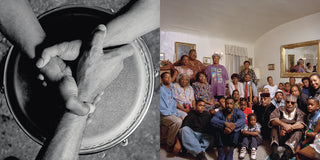With his first major work It’s Not About a Salary… Rap, Race and Resistance in Los Angeles, Limerick, Ireland native Brian Cross was able to have a discussion about the relationship between hip-hop and the jazz scene in his then-new home of Los Angeles. With interviews from Gil Scott-Heron along with Ice Cube, Eazy-E, and others, it provided a primary source for later generations studying the development of the hip-hop scene in LA during the ‘90s, from mainstream to the underground. While writing his then-thesis at CalArts, he had made it clear what kind of artist he aimed to be. It’s not just just about photography and capturing a proper shot; it’s also about having a good idea of how you want to visually contribute to the culture. Photography may have brought Brian to the States, but his genuine love for hip-hop kept him in Los Angeles, at culturally one of the most impactful moments in the genre that crucially needed to be documented.
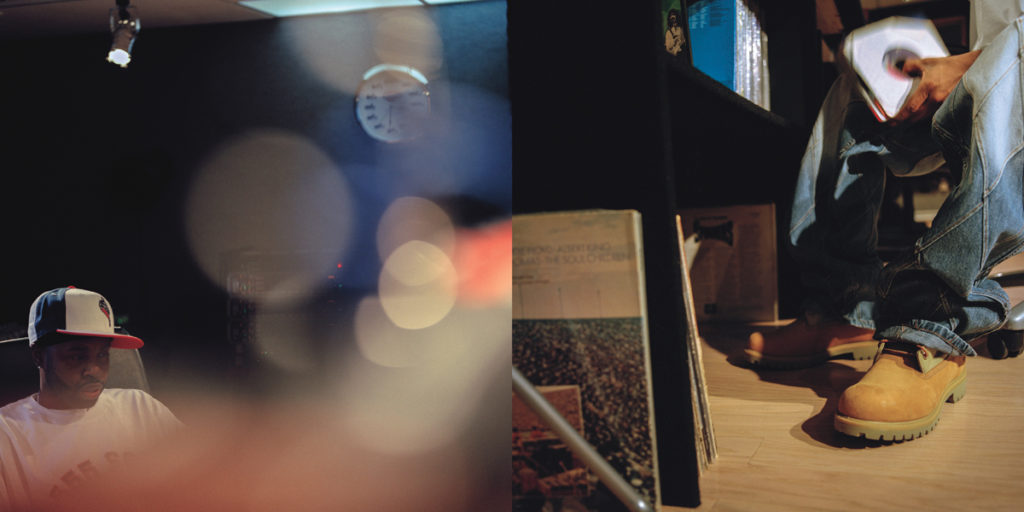
And document it he did. Over the span of 2 decades—including time as photo editor at Rap Pages and Wax Poetics—the Alan Lomax of the City of Angels was able to capture an expansive and diverse group of artists who shaped our hometown. From shooting the cover of underground legends Freestyle Fellowship’s Innercity Griots; to Eazy-E, David Axelrod, Brian Wilson, George Clinton, and J DIlla; he even shot the legendary Endtroducing..... cover for DJ Shadow. This is just naming a few. His now-classic documentary BRASILINTIME, created with his partner Eric Coleman (the co-founder of their production company Mochilla), captured a diverse group of American musicians making their first trip down to Brazil. The impact of that journey by itself, to me, is the source of all the $300 Tropicalia records trending on Discogs right now.
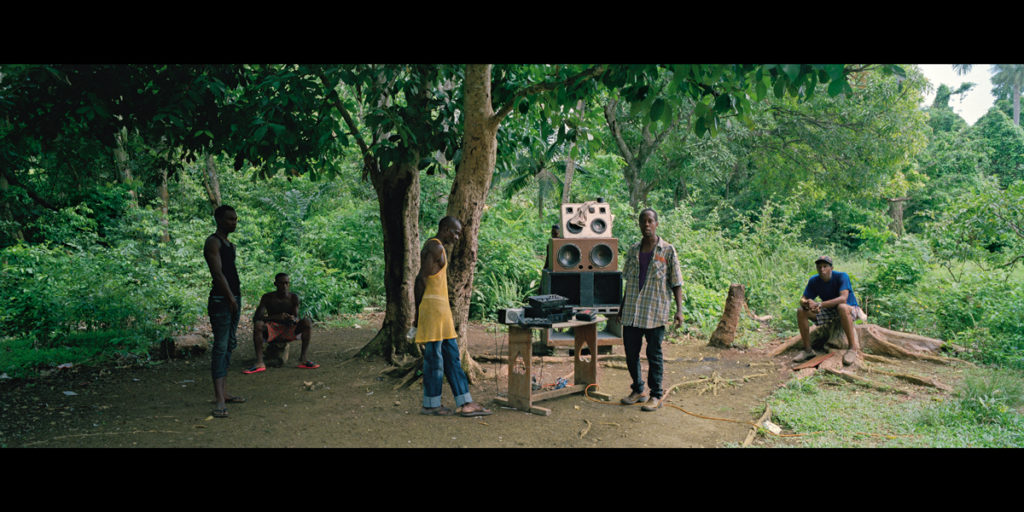
Similarly, B+’s exciting new hardcover book Ghostnotes: Music of the Unplayed is, in essence, a photographic history of his journey with music. It’s unlike other books of photography, presented like a visual mixtape. With Ghost Notes, the viewer gets the chance to rhythmically travel through a curated time capsule of music development, of memories past and present; prominent figures in music are juxtaposed with ordinary civilians who have crossed B+’s path during journeys through countries such as Jamaica, Ethiopia, and Brazil. Much like a mixtape, its layout is made up of these patch-worked collages of moments in music he has documented. Since the term “ghost notes” refers to the unplayed sounds that live between notes in a rhythm, still felt by a listener, the book works similarly, connecting the visceral imagery together in feeling.
B+ has used this opportunity to have an ongoing conversation about music’s ability to forever bridge the gap. Photos of legends like Brian Wilson and Shuggie Otis are intermingled with images of participants in a samba. Some parts will make sense to you as the viewer—and then others won’t. B+ describes himself as a “digger, who paid attention,” after all. The book opens with a great introduction by Jeff Chang and essays by Greg Tate and Dave Tompkins. On a late summer afternoon, I got the chance to sit with B+ in Glassel Park, where we chatted about legacy, industry do’s and don’t’s, integrity and responsibility as a photographer, and what hip-hop represented for many shooters in the ‘90s.
A 2014 video preview of a B+ Ghostnotes show, with photos documenting LA’s early ’90s underground scene to portraits of Nas and Lauryn Hill.
SENAY KENFE: You’ve presented similar work previously at shows before under the name “Ghost Notes,” right?
B+: The first time I showed the work in this form was in 1998 at New Image Art and the subtitle of the show was Ghostnotes: A Photographic Mixtake. So it was like mixtape mixed up with mistake. I always thought of it as a kind of mixtape… I scanned like 4500 images basically. That was the process that started how to make this book five years ago... I used to make mixtapes back in the day. [Ghostnotes has] that kind of freestyle.
I was never one of these dudes that would, you know, rehearse it over and over and over and make it really, really tight. My thing was generally just get lit and go in the stacks and figure it out. An homage to the notion of how a mixtape functions.
Right because [it isn’t] linear.
It’s not linear, no. Not in the conventional sense, no. I mean to me there is a thread but it’s not linear. It’s similar because people say, “Oh, it starts in South Central in the ‘90s and it ends up in Africa.” And it’s like, well, actually it doesn’t. There’s stuff from South Central at the end of the book too. Pharoah [Saunders], [Flying] Lotus, and Alice [Coltrane]. That’s the beginning of Low End Theory right there. Tape box. Parking lot outside the Little Temple [a now-closed venue in the Virgil Village area of Los Angeles]. Georgia [Anne Muldrow] outside there as well. Art Laboe.
“I was never in it for short gain. I was never in it to be friends with famous people. I was never in it to make fast money.”
So you were talking about uniformity within music earlier. In terms of editorial in the ‘90s, how did you feel about that in terms of rap editorial as a photographer [at Rap Pages]? Were you influenced by your colleagues using fish eye, etc.?
I was very green. I came straight out of grad school. I mean I started this project in grad school, It’s Not About A Salary. [The introduction to that book is] like a 50-page essay. The rest of it was oral history… I mean I was living here during the riots. The rebellion of ‘92, I was here. I was involved in The Good Life. Mostly everything I learned was from like, you could the books in one hand and… [the rest was from] hanging out with people like The Fellowship, JMD... Just from talking to all those dudes and just following up things and paying attention to records and listening to people. People like Big Boy, all kinds of cats. I just pieced it up really.
But as far as the style in terms of shooting, for the most part, it was inherited from skate photography out here. It was a lot of the same cats that were shooting skate end up shooting, you know, Glen Friedman ended up doing obviously PE [Public Enemy], but he [also shot] South Central Cartel. You know there’s a load of shit that he did, a lot of shit for Def Jam. It wasn’t like he reinvented it because he wasn’t shooting skaters, he was shooting rappers. He just continued with the same style and to some degree when I started, you know, you felt like that’s what you were supposed to do.
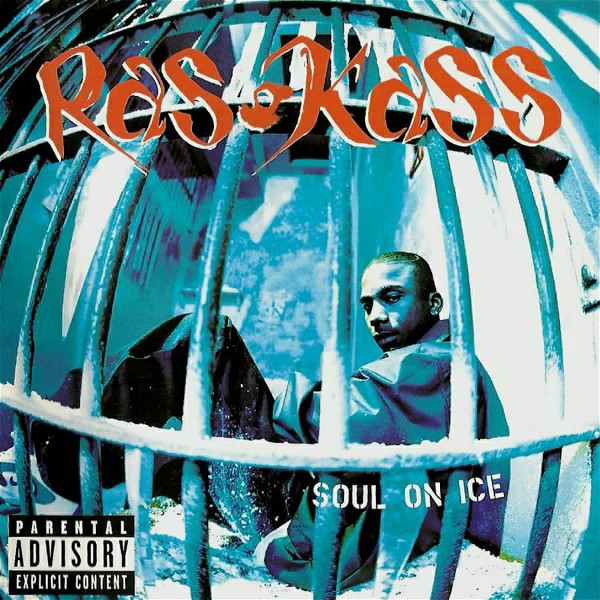
Ras Kass – Soul on Ice (cover shot by B+)
So the first lens I ever bought was an 18mm. My little twist was I didn’t like the distortion of the fisheye. I liked the wideness, so I found an architectural lens that was corrected. So it didn’t have that tat bowing or whatever. Cross-processing was the hot shit. Everything, garish colors, all that shit. It took a while. It took really ‘96. It was really like around the time, like I shot Endtroducing and Soul On Ice, the first Ras Kass record the same week.
Where is that jail [in the Ras Kass Soul On Ice album cover shot]?
It’s right there. The one, like if you went down San Fernando road there there’s a jail on the right hand side… Fucking nasty in there. It’s been closed down a long time. But for me, that was kind of an important week. To see that, the Shadow thing, it was really kind of improvised and figured out in the moment. The Ras Kass thing, man, I spent fucking months. I mean, to me at the time, like our Nas was Ras. He was supposed to be the one, you know… So I took it hella serious, the kind of shit that he was saying was hella serious. The kind of honesty, the brutality of it was... it was important. “Nature of the Threat,” man, that was it. So I designed it like a prayer book where each song had a photograph that went with it.
And then just to see like—no disrespect to Coolio—but Coolio got involved in the last minute and started managing him and it just all went south. It was like, suddenly at the last minute right before you were about to take off. It was like, No, no, no, no, no we’re supposed to make it, you’re not supposed to be a pop rap record. It is what it is... It didn’t pan out. As good as that record was, as a demo, it was never that good as a finished album. A lot of records from that period are like that. You know, Ganjah K made a record. To me, that was one of the greatest fucking rap records out here. It never even came out. It was fucking incredible…
Something got lost. And this was kind of the story out here. Honestly man, I feel like it wasn’t really until Otis [Madlib] really that people started to make the kinds of records—the kind of creative records—that they you know unabashedly wanted to make and not give a fuck about what the protocols are, what it’s supposed to sound like. You know, fuck radio. You know what I mean? It was all corrupt and it was all stupid. It was all people bending their creativity to fit something that wasn’t even meant to be.
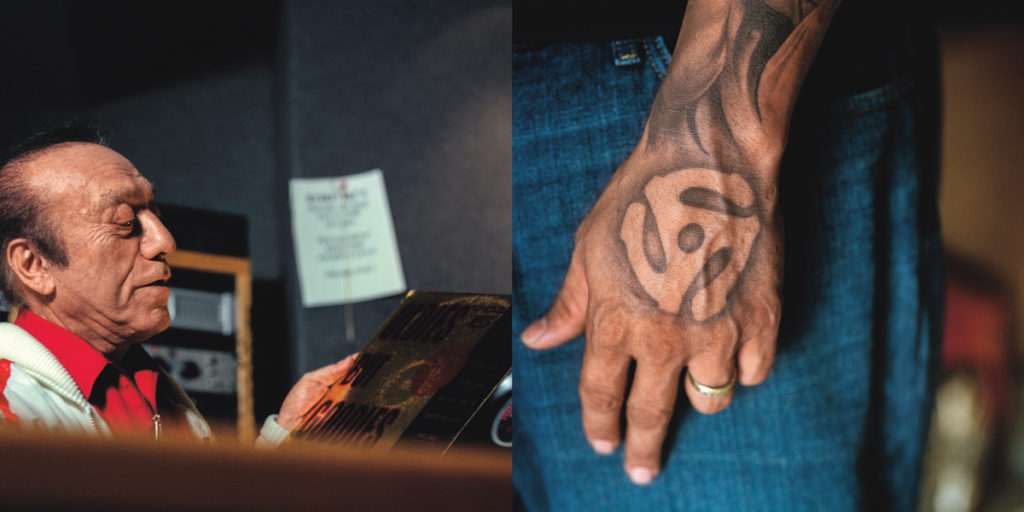
Similar to what you’re saying about music—the watering down as it gets touched by the label people—did you feel that same way in terms of editorial work that you would do at that time, for instance, with Rap Pages?
I didn’t write. I wrote from time to time but my main gig at that time, you know I worked for Urb sometimes. I liked Urb. As far as the writing, you know the nice thing about Rap Pages—I was telling somebody about this the other day—maybe like a year to a year and a half before Sheena Lester left, it suddenly occurred to her, she was thinking about the competition thing with The Source the wrong way around. We were never going to win. You know they were in their own division, they were owned by cats that were engaged out there, whoever they were, whatever it was. They were cats that were connected some way in New York, were there on the ground. It was what it was.
However, they were in a position to where they couldn’t put Goodie Mob on the cover on their first record, whereas we could. Whereas we could put if we felt like putting you know Kool G Rap is going to make, hasn’t made a record in fucking five years, put him on the fucking cover. And in that moment, it was wonderful, actually. It felt free. It was like, we’ll just do what the fuck we want and if they want to advertise with us, let them advertise. You know, it was that period where you could live on that. Like Grand Royal. You know that era where there were advertisers that were down. There was this new generation of people that had access to budgets.
“I feel like pointing and pressing the button sometimes is fine, but there’s a kind of responsibility that comes with that shit.”
Do you miss that energy in terms of right now as a professional? How do you think you’re able to adapt? You just said you’re going to do a Levi’s ad campaign. How is it that you are here where you are in the creative world and you have longevity?
Well, I mean for better or worse, I was never in it for short gain. I was never in it to be friends with famous people. I was never in it to make fast money. I was never in it to get the biggest fucking campaigns. In fact, whenever I got big campaigns, you know it’s taken me years to be okay with doing things like fucking Levi’s because, yeah, they’re going to pay me a lot of money. They’re going to get every fucking dime out of me in fucking blood. I mean, that’s just the way it is. In order for me to not want to go fucking postal on these motherfuckers that took time. I wasn’t built that way.
There are people that were built that way, you know what I’m saying? I’m not one of them. What I would say to you, though, is this: as far as longevity, if you build something around something like an aesthetic or an opinion or a philosophy that you believe in, that makes sense to you—if that’s understandable to people, there will always be work. Because people always want to touch that, because it’s something authentic, it’s something like, “No, we got B to do it.” That means something, you know what I’m saying?
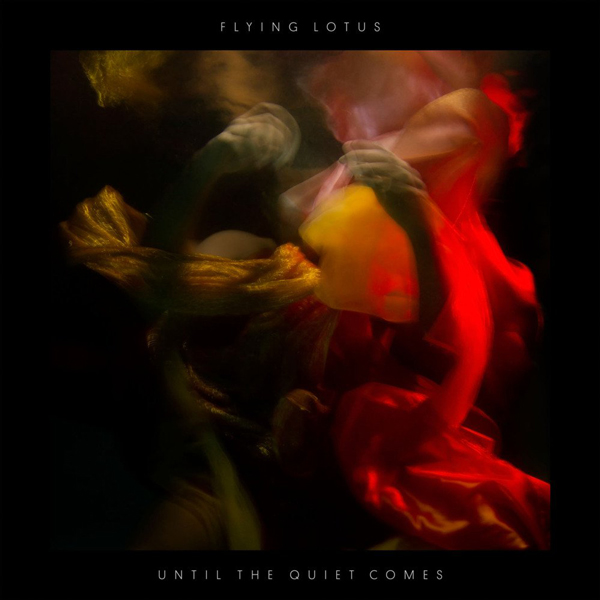
Flying Lotus – Until the Quiet Comes (cover shot by B+)
That’s why, you know I remember, it was very flattering, it was funny to me, it was like [Flying] Lotus come to me when we did Until The Quiet Comes and he said, “You know I know you don’t shoot anybody.” It’s true. I’m not out there like, Oh, that’s hot. I mean, if I’m supposed to shoot them, I’ll shoot them. If I really want to because I have something to contribute, I’ll go tell them.
That’s why with [Stones Throw] and Peanut Butter Wolf, that Quasimoto shit came out, and we just call them up, we were like, “Listen, this shit is dope. We’re down. Fucking money—we’ll figure it out. You need photos, we’re there.” And that’s how it started. It was a good 10 years of relationship there. And in the end, that’s it. There’s quiet years, there’s busy years—I’m still here.
I think that’s the thing as well for people, you know, I think in our game, especially when I started out the first 10 years of me doing this, man—people used hip-hop as a fucking jump off. Hip-hop was a way to get to advertising, it was a way to get to do fucking features. You could name all the fucking wack, lame, rom-com directors in Hollywood and at least half of them started doing shit in hip-hop and could give a fuck about that shit. You know what I’m saying? Could give a fuck. That was just the door that was open at that particular time. If it was grunge rock, they would’ve done that. That wasn’t my M.O., still not my M.O.
“I do shit that I believe in… I always had this notion that somehow, there’s bigger stories to be told that aren’t being told.”
I do shit that I believe in, that I’m committed to, that I feel like actually makes a difference. I had chances to do things that I turned down, you know. It’s not like I regret it… In the back of my mind, I always had this notion that somehow, there’s bigger stories to be told that aren’t being told. And as much as possible if the bone is thrown your way, you should go after that. Keep that in the back of your mind and keep doing that.
And so you know, I don’t know it’s weird because when you look at it now, I was at this thing at The Getty last night they were like, “Explain what kind of music [this book is about].” I don’t know, what’s the thread that goes between Bill Withers and David Axelrod and Shuggie Otis?
Oh, you have David Axelrod in here too?
Yeah, Axelrod is in there a bunch. What’s the thread? Well, these are all pretty obscure… Mulatu Astatke—I actually went to Ethiopia to photograph him. Dudes that are not readily accessible but that have made a very important contribution to the culture. I’m that guy. I’m curating it. I’m giving you my five cents. But it’s five cents from somebody who’s a digger, who paid attention.
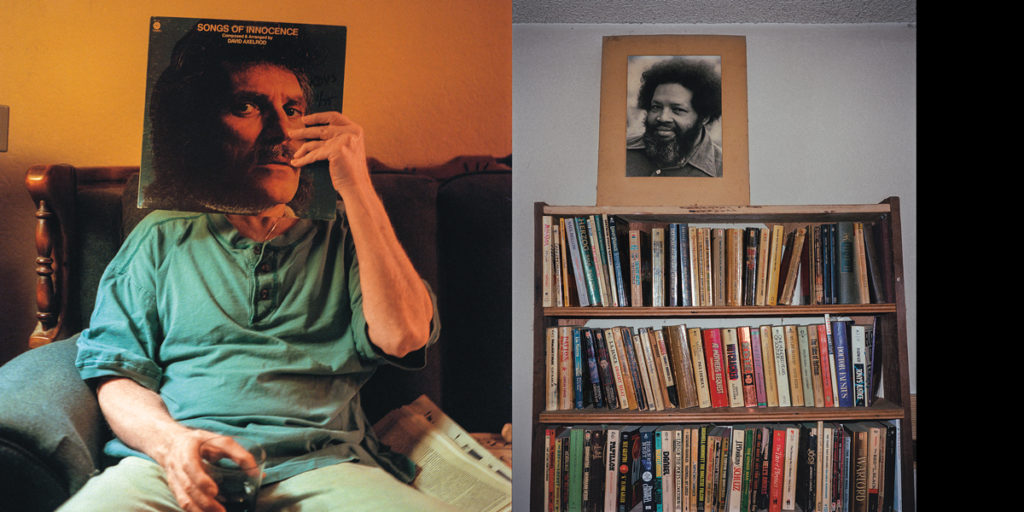
I think now within [our current age, there’s a greater] awareness of what is social capital. That’s why everyone wants to be seen and be a part of the community more now than ever. “I was the dude that was there in downtown New York when Keith Haring was around and I can do a retrospect,” or whatever. I’m not making fun of anyone who’s a photographer. I just mean to speak on [photographers who] were somewhere at a certain time, and [because] they were present, they’ve been able to build an archive 20 years later. Do you think people in your time were thinking that?
Like, you know, these artists like [Gunner Stahl], he shoots Gucci Mane and all the Atlanta rappers, and I saw an interview where he was like, “Yeah, in 20 years I’m going to do a museum thing of all this.” He’s already thinking that, and he’s just starting out. Why don’t you think people in the ‘90s—on the documentarian side of things—weren’t perceiving it like that?
Because in that moment, it wasn’t conceived of having any value. I mean, I sat yesterday with three photographers who’ve been photographing American cities for the last 70 years between the three of them. And they thought it was funny that [hip-hop was] what I was photographing. Well, that’s basically a reminder of how it felt when I was doing that shit in the ‘90s. You know when I was at CalArts, man. People used to write shit on my locker man, shit that stuck with me, shit that hurt, you know? Because people didn’t take it seriously. I mean, that’s basically it.
It’s a problem in general. When you make photographs, you realize you’re making things if you do it right. This is the problem for me with photographers like our guy in New York whose name you [mentioned earlier], I don’t want to talk shit about him he’s actually a nice guy. There’s a level of seriousness involved. To me, I feel like pointing and pressing the button sometimes is fine but there’s a kind of responsibility that comes with that shit—that you actually really make an effort to not just say, “I was there,” but actually, “I was there, and I was the one in the room that was actually thinking, 30 years from now, people will really like to see a fucking good photograph of Rick Rubin shaking hands with Keith Haring.” You know what I’m saying? As opposed to something which just kind of looks like could’ve been your cousin’s wedding.
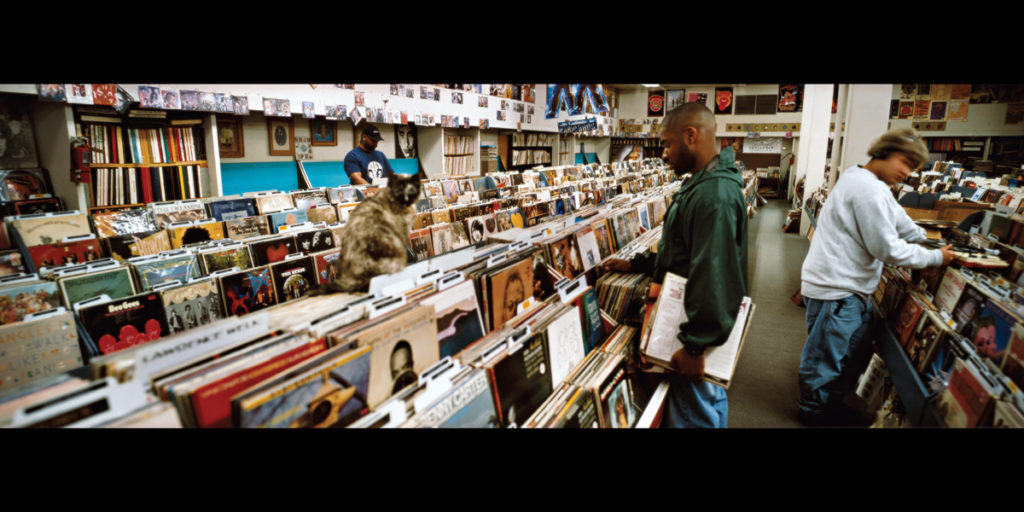
Even if sometimes the shit that [looks like] your cousin’s wedding, if [there’s] important enough people in it, it does have some value, but it’s something different. And I was of the opinion that this is the kind of long-term thinking that has to be involved in photography. You know we’re archive builders, dude. This is a library.
Regardless of whether people laugh, like yesterday I’m with a bunch of dudes—they’re not that much older than me, they’re 10-20 years older than me—and they’re all in The Smithsonian collection. Well, I’m in The Smithsonian. They’re saying they’re in this and they got this grant and that grant—so do I. You know, I’m not fucking blowing my horn, but I wouldn’t laugh at what they do. Why the fuck do you think it’s okay to laugh at what I do? The guy saying to me like, “So these rappers they give you checks?” Motherfucker, like what, were you asleep? Talk about photographing in poor communities? Did you not notice there’s a different kind of economy happening?
“There’s no relationship between truth and popularity ultimately.”
…The notion that there’s enough capital amongst these young men of color to fucking pay for good photography, you fucking kidding me? You know what I mean? Like, open your eyes, bro. I mean the best fucking shooters in the world now shoot rappers. I mean, that’s just what’s up. And it’s been like that for a good minute. As it should be.
I mean, who’s doing the most culture? I’m sorry, who’s listening to rock? Come on man. You know what I’m saying, in the late ‘70s yeah when a Pink Floyd record came out or a fucking Clash record came out it was a huge cultural fucking moment. [Rock] ain’t doing that now. It don’t function in the same way.
In terms of photography, how has the internet impacted how you perceive photos? Like the editing process, etc.
Well, for us there’s two aspects of this, right? There’s the internet—a method of distribution—but then there’s the actual process itself being impacted because now we don’t shoot film anymore, we shoot digital mostly. I mean, we still shoot film, but digital has impacted even the way you shoot film; they’re looking for it the next day, they don’t give a fuck what you shot on. But it’s impacted in a huge way.
I mean, back in the day I had a book, a portfolio that had like 60 pages in it. It was 11×14 and I had two of them and they were always gone. I wouldn’t see them from one end of the year. I’d call them back and I’d swap photos out and shit but it was gone all the time. It’d go from one record label and magazine to another to another. It was just gone. And that’s how people you know knew what the fuck I did. People would know you before you walked in there. They’d know the work or have a Xerox of it. You know, whatever, they would’ve found a way to archive, have some notion of who you were. But that was it. Now it’s—what’s even worse is now there’s an economy of clicks where it’s like I won’t even be considered for a job unless I have, I don’t know, whatever number you want to put on it likes on Instagram or followers on Instagram or fucking... that kind of shit.
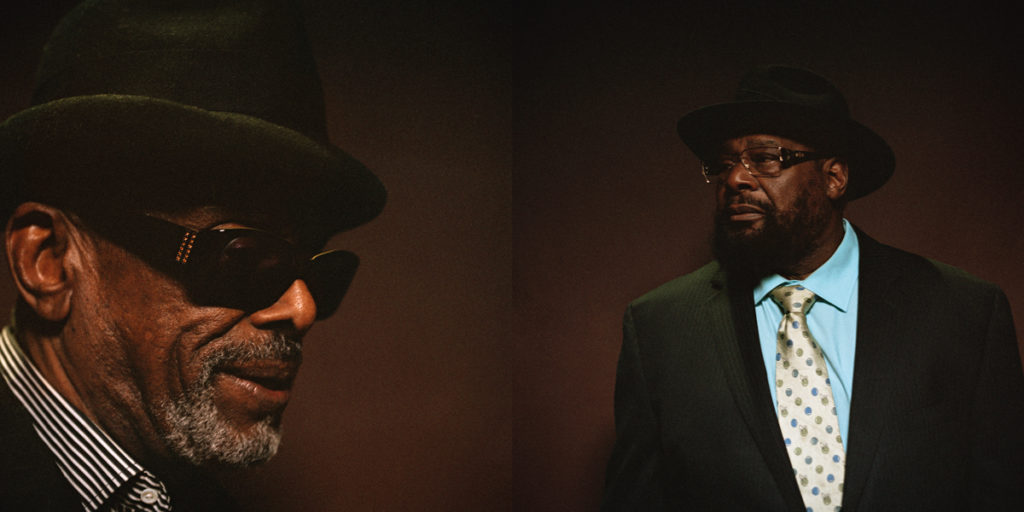
Just playing devil’s advocate, on one hand, one might say that well you have a wider presence either because you know how to use the internet better than your peers. Or you just have some dope shit that just transcends and that’s why it resonates so well because it’s critically acclaimed. How do you feel?
I mean it’s always been that way. I mean, “Oh you shot that Easy E, you shot that Snoop Dogg, you shot The Fugees, oh that Rap Pages cover was you?” Or whatever. It’s always been a notion that somehow you could deliver something that would resonate again ‘cause there [is new] interest around the project or whatever it was. I mean, that’s what they’re looking for. It’s just now they have some notion that like by virtue of how successful you are in garnering likes on fucking Instagram that that’s a measure of your ability to create iconographic images. and unfortunately that’s not true. If that was the case, surely Kim Kardashian would be shooting everybody’s record cover right? She doesn’t even shoot her husband’s record cover. You know what I’m saying? It’s dumb.
“I feel like if there’s a ton of marketing money involved, it’s there to compensate for the fact that there’s something actually fucking missing.”
No that’s true. It’s a poor metric.
It’s a poor metric. It is a poor metric. As far as the people that rely on it as a metric I think they’re not making their decisions terribly well-informed. They’re not really thinking it through. You know I think big data in general is something that will go away or at least its influence will go away.
What do you mean big data?
Big data is like: we found a way to measure how many brushstrokes Rembrandt used to make that painting. We found a way to decide who’s the most popular photographer by virtue of how many clicks they have. We found a way that there’s some notion, there’s a metric that you can use to determine quality by virtue of quantity, or some notion of popularity, when in fact you know it’s as silly as saying the most popular thing is the most true thing. There’s no relationship between truth and popularity ultimately. Especially the kind of popularity we’re talking about.
…You know, Steve McCurry [and his shot of the] Afghani girl—can you really measure the power of that image by how many times it’s been reposted? That seems ridiculous.
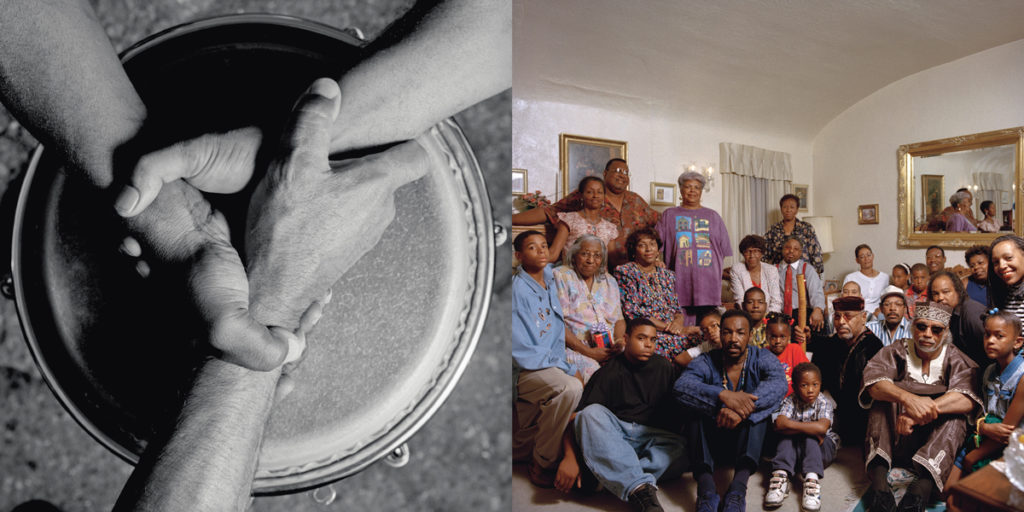
In terms of scale, how I measure something versus how you measure it can be completely different.
Yeah. I mean is the Mona Lisa the best fucking painting ever made? You know what I’m saying? I don’t know. To be honest with you, I’m the opposite. I feel like if there’s a ton of marketing money involved, it’s there to compensate for the fact that there’s something actually fucking missing that they’re trying to get you to like something you otherwise might not like.
Now I understand in the game of corporate culture where first week ratings—how much of a dent you make—means how many advanced sales you have and all that kind of shit, trust me I’m aware, I’m not naïve to that shit. I understand why that is the way it is. But in general, if you have to shove it down my fucking throat, I feel like I kind of don’t need it actually. That’s kind of what drives Ghostnotes. Ghostnotes is: “Nobody gave a fuck about Shuggie Otis for a very, very long time. Sadly, people don’t really understand just how important the songwriter Bill Withers is.”
For everyone in Ghostnotes, did you have to reach out? Did you like hit up Shuggie [Otis] and Bill [Withers]?
Shuggie is pretty recent. We would’ve talked about the notion, “Yeah, I’m working on a book and whatever.” Shuggie, for a very long time I wanted to photograph him.
I mean, a lot of cats know this [book] is coming, although you know it’s only really if I get a chance to talk to dudes that I’ll be like, “Yo.” I’m not that kind of a networker where I’m like, “Hey!” I’m just doing my thing.
“I just speak what’s on my mind. For me, it means I get to sleep easier but yeah, I’m poorer.”
Are you envious of that kind of energy that some people have?
Yeah, but I don’t like those kind of people.
I had this girl once. We could go to any party and she’d walk in the room and neither of us would know anyone. Blank slate, we don’t know anybody at the beginning. Give her an hour, come back and she would’ve gotten the email address of the most significant or important persons in the room. Now they’re friends on Facebook, now they swapped emails and they’re going to meet next week for coffee. It’s like that motherfucker runs a movie studio or that motherfucker is a big deal producer or rapper or whatever... it used to drive me nuts.
But it’s just a skill. It’s just a skill. It’s a skill I don’t have, for better or worse. There’s a lot of skills I don’t have. As you can tell, I’m not strategic as far as how I speak. I just speak what’s on my mind. For me, it means I get to sleep easier but yeah, I’m poorer. I look at dudes that I came up with or whatever, dudes I came up with in the photo game that are like millionaires now and I’m just like, fucking hell. Did they really do anything different than me? Not really. When it comes down to photography, no. That’s only a part of it. Kahlil [Joseph] said, “My father used to always say, talent ain’t everything.” It’s true. It’s only a little bit. But obviously it’s the little bit you have to have to get started.
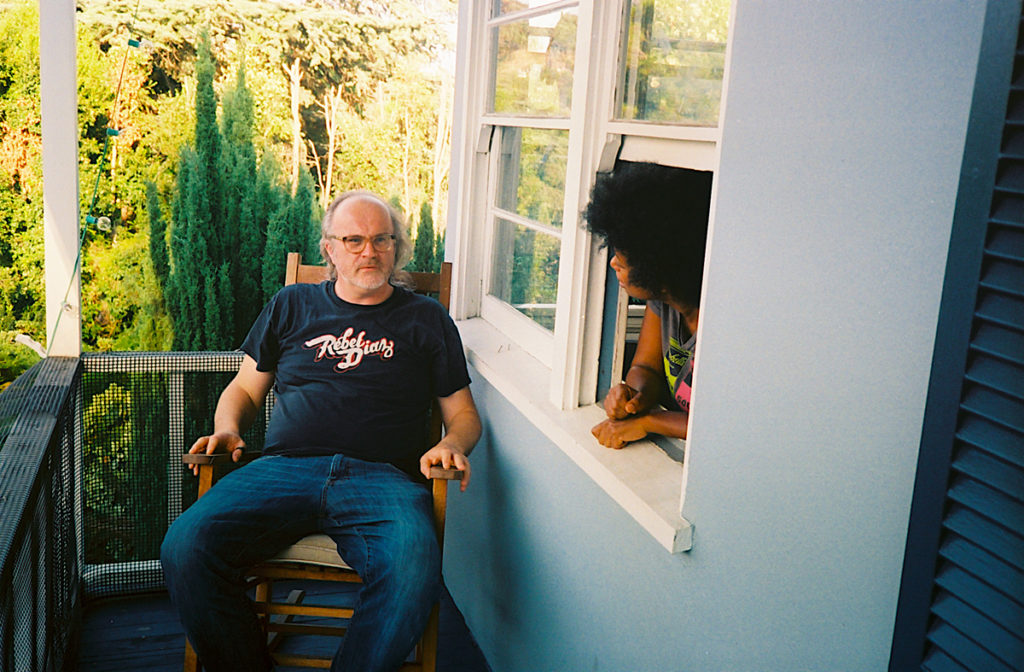
“Music of the Unplayed.” I think that’s a good thing to end on. What does that mean?
Basically, dude, like Ghostnotes itself, like what “ghostnotes” really means is kind of like an unplayed part of a rhythm. It’s the sound of your body interacting with the drum set in a way that you didn’t, it could be anything. It could be like in between beats, there’s something to put your hand at rest makes a slight sound and that becomes part of the rhythm... the unplayed part of the rhythm. So literally it’s a reference to that. It’s a reference to the kind of unplayed part of the music. It’s a kind of wordplay as well in the sense that it’s music of the folks that have been unplayed. The folks that didn’t get played—the ones that didn’t get played out.
I mean that’s definitely represented very well in the book.
Yeah. I spend a lot of time driving up and down to San Diego and when this was all starting to come together, my essay is at the end of it as well. Maybe three or four times driving up and down I would just blaze and just go silent and just use my voice memo shit and just try to speak as much of it as I could and in the process of just trying to kind of rehearse it or improvise it or speak it out, you know, channel it a little bit myself; I came up with that phrase and it just stuck.
***
This interview has been edited for clarity and brevity. You can grab a copy of Ghost Notes: Music of the Unplayed at Stones Throw, Fat Beats, and Amazon.

